Posted by: Northwest Eye in General on October 13, 2025
Overview
Eyelid ptosis, which involves the drooping of the upper eyelids, can understandably cause concern. It may arise from various factors, including aging, genetic predispositions, neurological conditions, and trauma. This condition can significantly affect both your vision and appearance, and we want you to know that you are not alone in facing this challenge.
We understand that exploring treatment options can feel overwhelming. The article provides a comprehensive overview of how to address this condition effectively. Treatment options range from:
- Surgical interventions, such as levator muscle repair
- Non-surgical methods like prescription eye drops and Botox
Each option is designed with your needs in mind, ensuring you have the best care possible.
It’s common to feel uncertain about the right path forward, but rest assured that support is available. We are here to help you through this process, providing the information you need to make informed decisions about your care.
Introduction
Eyelid ptosis, which manifests as the drooping of the upper eyelids, can profoundly affect both vision and self-esteem. We understand that this condition may arise from various factors, such as aging, genetic predispositions, or nerve damage. Recognizing its implications is crucial for individuals facing this challenge. The sagging eyelids can obstruct vision and alter facial aesthetics, leading to feelings of concern.
So, what are the most effective ways to diagnose and treat this condition? By exploring the causes, symptoms, and available treatment options, we can pave a path toward restoring both function and confidence.
Define Eyelid Ptosis: Understanding the Condition
Upper lid drooping, which is also known as eyelid ptosis, can be concerning. Eyelid ptosis is a condition that involves the sagging or lowering of the upper lid, which may affect one or both eyes. The severity can range from a slight droop that is barely noticeable to a significant sag that may obstruct your vision. We understand that this can be distressing, and it can arise from various factors such as muscle weakness, nerve damage, or simply the aging process.
In adults, eyelid ptosis is frequently caused by the lifting muscles detaching from the eye due to aging or trauma. It’s important to comprehend eyelid ptosis, as it can impact both vision and facial aesthetics. Many individuals experience challenges with sight, and in some cases, medical treatment for eyelid ptosis may be necessary for correction.
At Northwest Eye, we are here to help you through this process. Dr. Nicholas Schmitt specializes in addressing eyelid ptosis and other eyelid abnormalities through surgical methods like Upper Eyelid Blepharoplasty. This procedure involves removing excess skin and fat to restore the position of the eye region, .
Recovery typically includes some bruising and swelling, but most patients can resume normal activities within just a few days. If you find that the drooping interferes with your vision, it’s comforting to know that insurance may cover the surgical correction. We encourage you to consider this option if you are affected by this condition, as we are dedicated to supporting you every step of the way.
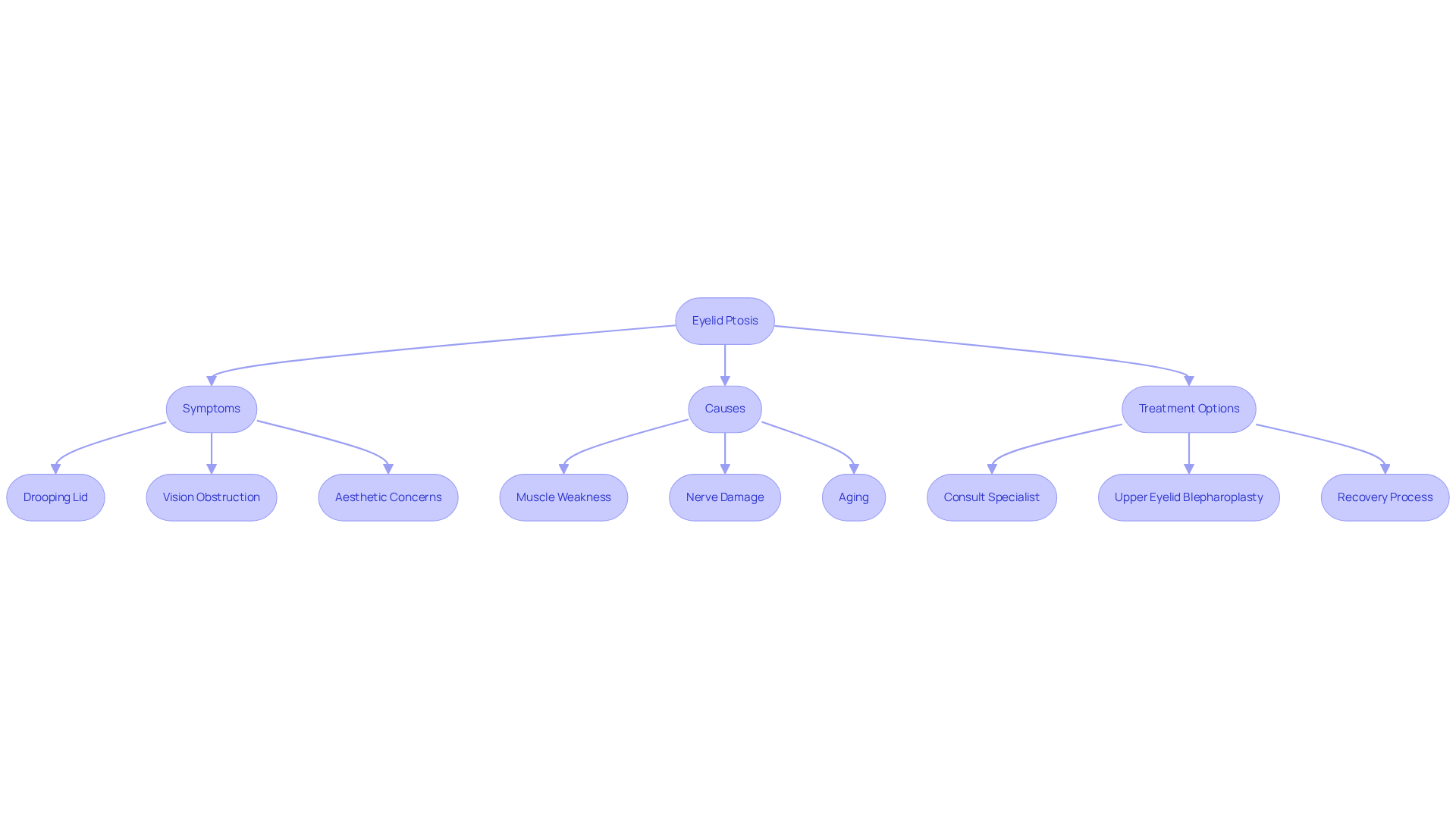
Identify Causes of Eyelid Ptosis: From Genetics to Aging
Eyelid ptosis, which is commonly known as blepharoptosis, can occur due to a range of causes. We understand that this condition can be concerning, and it’s important to explore the reasons behind it:
- Genetic Factors: Some individuals may inherit conditions that make them more susceptible to ptosis. For instance, eyelid ptosis is a condition that occurs when the eyelid droops from birth due to underdeveloped muscles.
- Aging: As we age, the weakening of the tissues that support the upper eye area can lead to eyelid ptosis. This is a common experience for many older adults.
- Neurological Conditions: Disorders like myasthenia gravis or Horner’s syndrome can affect the nerves that control eye movement, resulting in eyelid ptosis.
- Trauma: Injuries to the eye or surrounding areas can damage the muscles or nerves, leading to eyelid ptosis.
- Previous Eye Surgery: Sometimes, surgical procedures in the eye region or nearby areas can result in eyelid ptosis as a complication.
- Associated Eye Conditions: Other conditions, such as eyelid ptosis, chalazion, ectropion, entropion, and thyroid eye disease, can also contribute to eyelid drooping.
It’s common to feel uncertain about these symptoms, but seeking professional medical help is crucial. Untreated conditions can lead to serious health complications, and we are here to help you through this process.
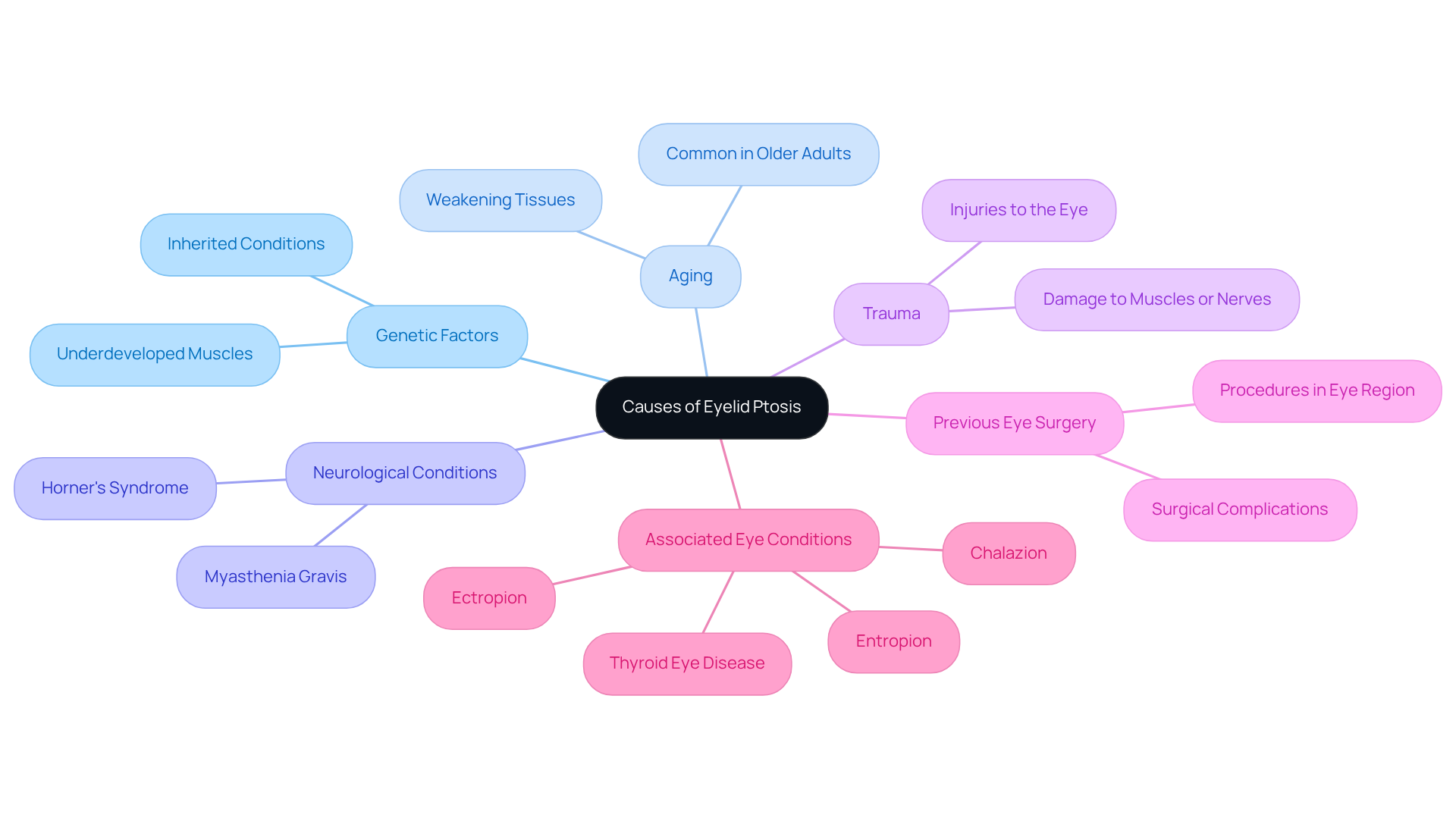
Recognize Symptoms of Eyelid Ptosis: Signs to Watch For
Common symptoms of eyelid ptosis include:
- Drooping Eyelids: We understand that the most noticeable sign is the sagging of one or both upper eyelids, which can be concerning.
- Obstructed Vision: In more severe cases of eyelid ptosis, the drooping eyelash may cover part of the pupil, impairing vision. It’s common to feel frustrated by this.
- Head Positioning: You might find yourself tilting your head back or raising your eyebrows to see better. This can lead to discomfort, and we empathize with that experience.
- Eye Fatigue: Prolonged efforts to keep your eyes open can result in fatigue or strain around the eyes. It’s important to listen to your body in these moments.
- Asymmetry: You may notice that one eyelash droops more than the other, which can be a result of eyelid ptosis, leading to an uneven appearance. This can understandably affect your confidence.
We are here to help you through this process and address any concerns you may have.
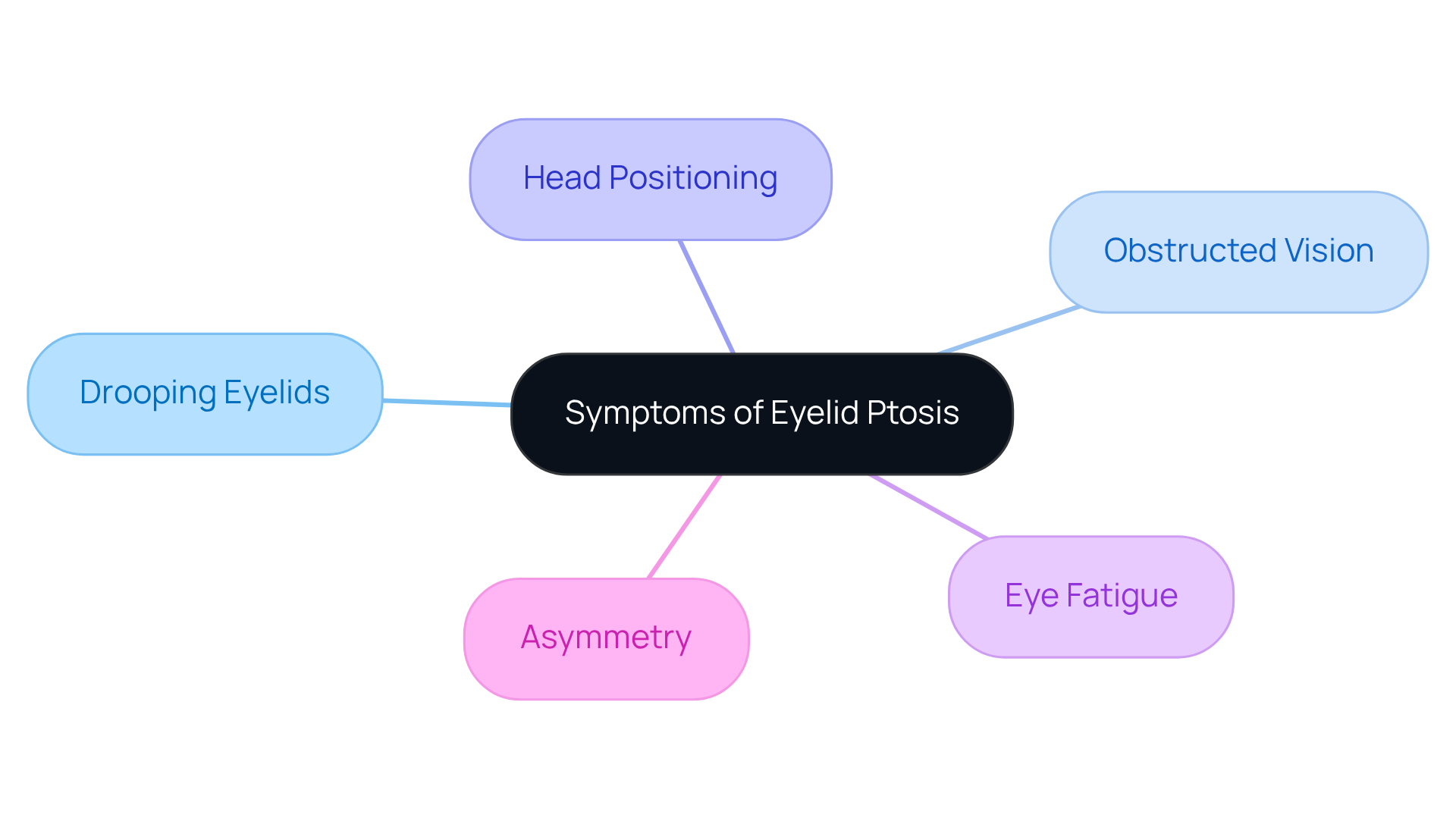
Diagnose Eyelid Ptosis: Evaluation and Testing Methods
A thorough evaluation by an ophthalmologist typically involves diagnosing eyelid ptosis. We understand that this process can feel overwhelming, but rest assured, we are here to help you through it. The evaluation may include:
- Visual Acuity Tests: Assessing how well you can see with each eye.
- Eyelid Measurements: Evaluating the distance between the upper lid and the pupil to gauge the severity of eyelid ptosis.
- Neurological Examination: Checking the function of the nerves that regulate eyelash movement.
- Imaging Tests: In some cases, CT or MRI scans may be ordered to rule out underlying conditions affecting the eyelids.
- Specialized Tests: Tests such as the ice test or the Tensilon test may be performed to evaluate function and nerve involvement.
We want you to know that are available to correct eyelid ptosis. These procedures are usually covered by insurance, making it essential to discuss your choices with your ophthalmologist at Northwest Eye. You are not alone in this journey, and we are here to support you every step of the way.
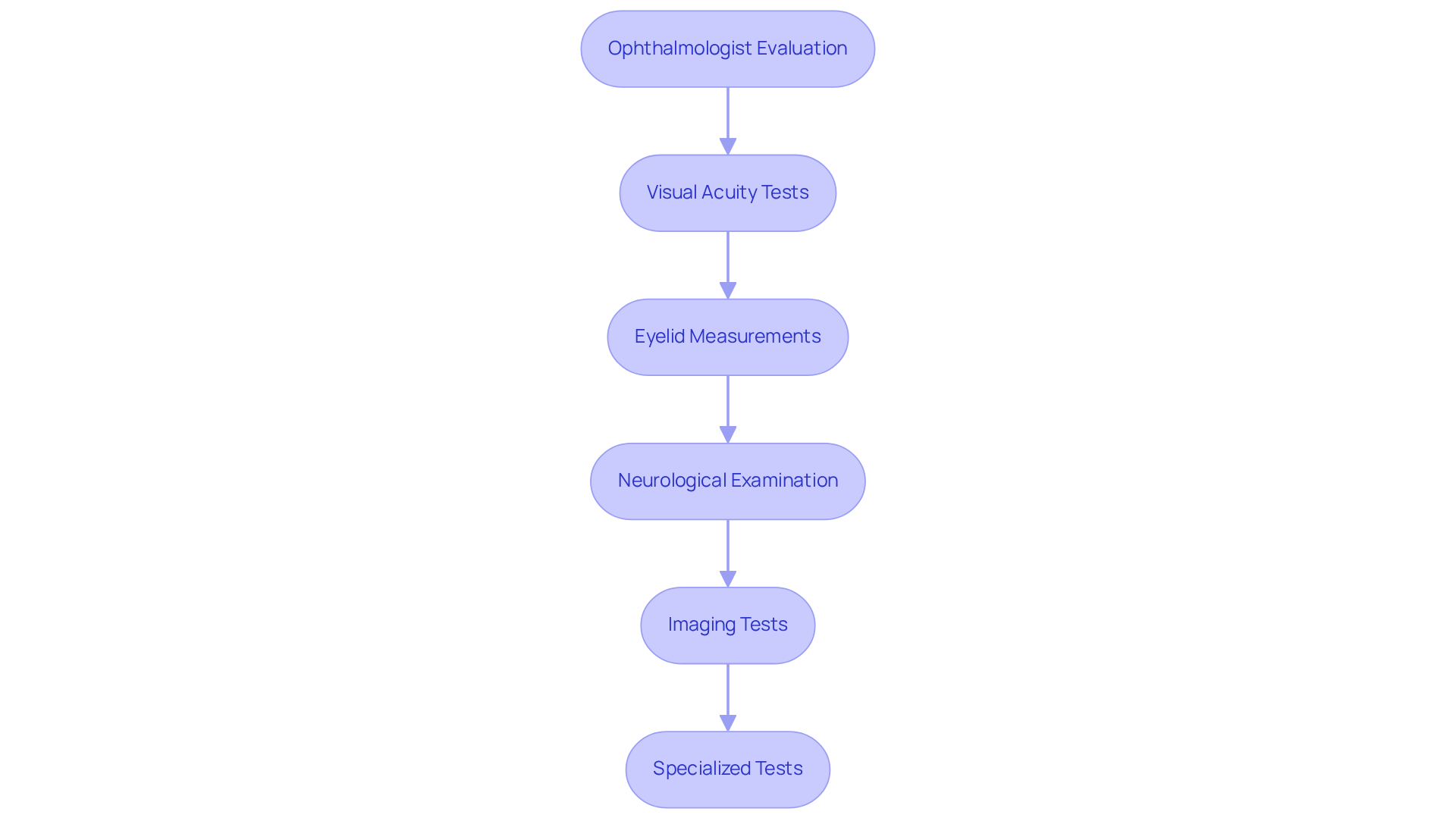
Explore Treatment Options for Eyelid Ptosis: Surgical and Non-Surgical Approaches
Understanding eyelid ptosis can feel overwhelming, and we want you to know that you are not alone in this journey. Eyelid ptosis treatment options can be categorized into surgical and non-surgical approaches, each designed to help you regain confidence in your appearance.
For those experiencing significant eyelid ptosis, surgery is often the most effective solution. This may involve:
- Levator Muscle Repair: This procedure focuses on strengthening or shortening the muscle responsible for lifting the eyelid, helping to restore its position.
- Müller’s Muscle-Conjunctival Resection: In this approach, a portion of the muscle is removed to elevate the upper lid, providing a more youthful appearance.
Non-Surgical Options: If you’re dealing with mild cases or if surgery isn’t the right fit for you, there are non-surgical treatments available:
- Prescription Eye Drops: Upneeq (oxymetazoline) is an FDA-approved eye drop that can temporarily lift the eyelid, offering a simple solution.
- Botox Injections: In certain situations, Botox may be used to enhance the position of both the upper and lower lids temporarily, providing a quick boost.
- Eye Exercises: Engaging in regular activities can help strengthen the muscles around your eyes, improving your overall appearance.
We understand that considering these options can feel daunting, but rest assured that we are here to help you through this process. Each treatment is designed with your comfort and well-being in mind, and we encourage you to reach out with any questions or concerns. Your journey towards is important to us.
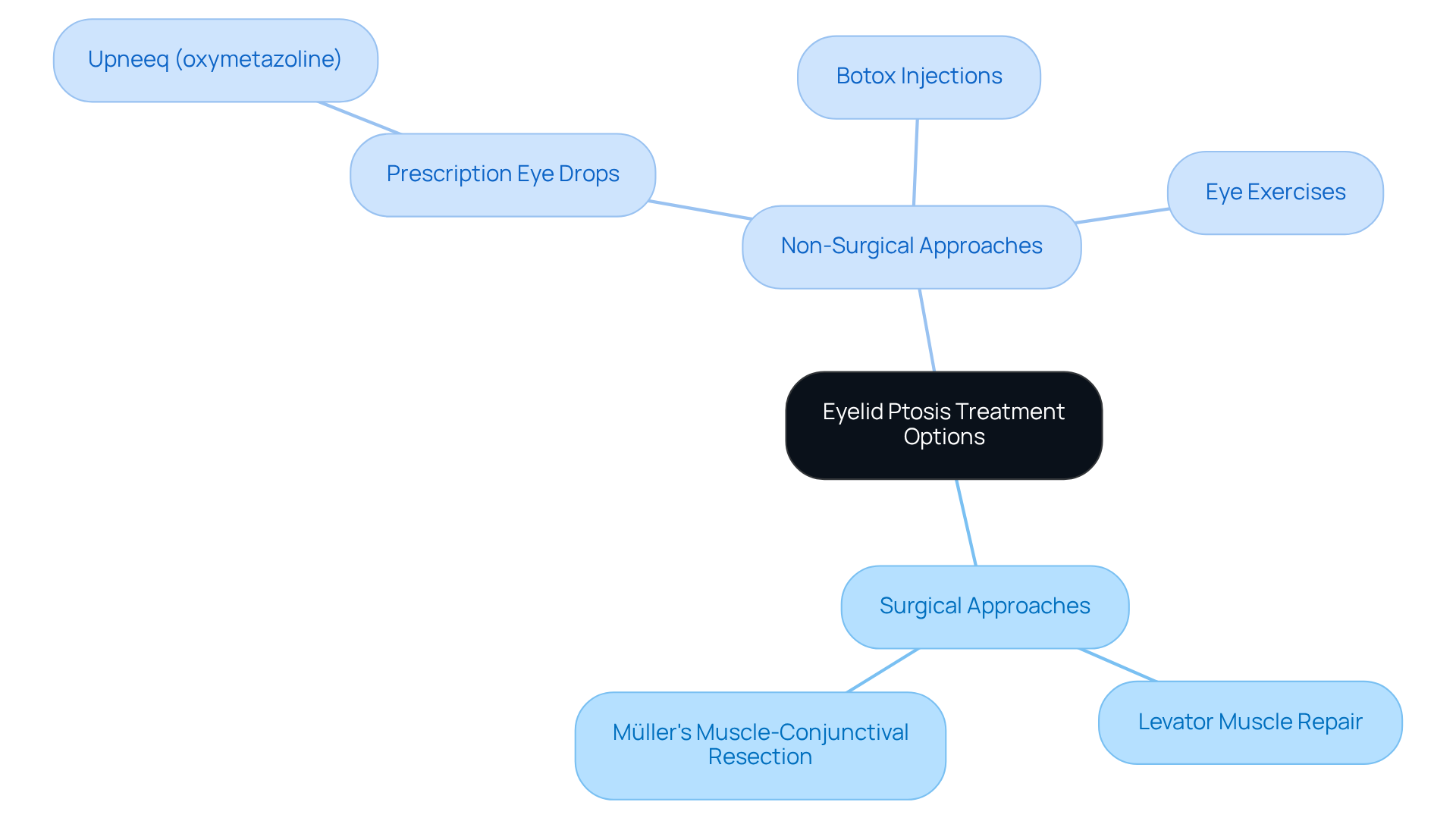
Post-Operative Care and Recovery for Eyelid Ptosis Surgery
Post-operative care following droop surgery is crucial for a successful recovery, and we understand that this can be a challenging time for you. Here are some key aspects to keep in mind:
- Follow-Up Appointments: It’s essential to schedule regular check-ups with your ophthalmologist. These appointments will help monitor your healing and assess the position of your eyelids in relation to eyelid ptosis, giving you peace of mind.
- Managing Discomfort: You may experience some swelling or bruising after the procedure. Applying cold compresses can be a soothing way to alleviate discomfort and help you feel more comfortable.
- Activity Restrictions: We recommend avoiding strenuous activities and bending over for a few weeks. This is important to prevent any strain on your eyes as you recover.
- Medication Compliance: Please remember to take your prescribed medications as directed. This will help manage any pain and prevent infection, ensuring a smoother recovery process.
- Monitoring for Complications: It’s common to feel concerned about your recovery. Be vigilant for any signs of infection or unusual changes in eyelid position, such as eyelid ptosis. If you notice anything that worries you, don’t hesitate to contact your doctor.
We are here to help you through this process, and is our priority.
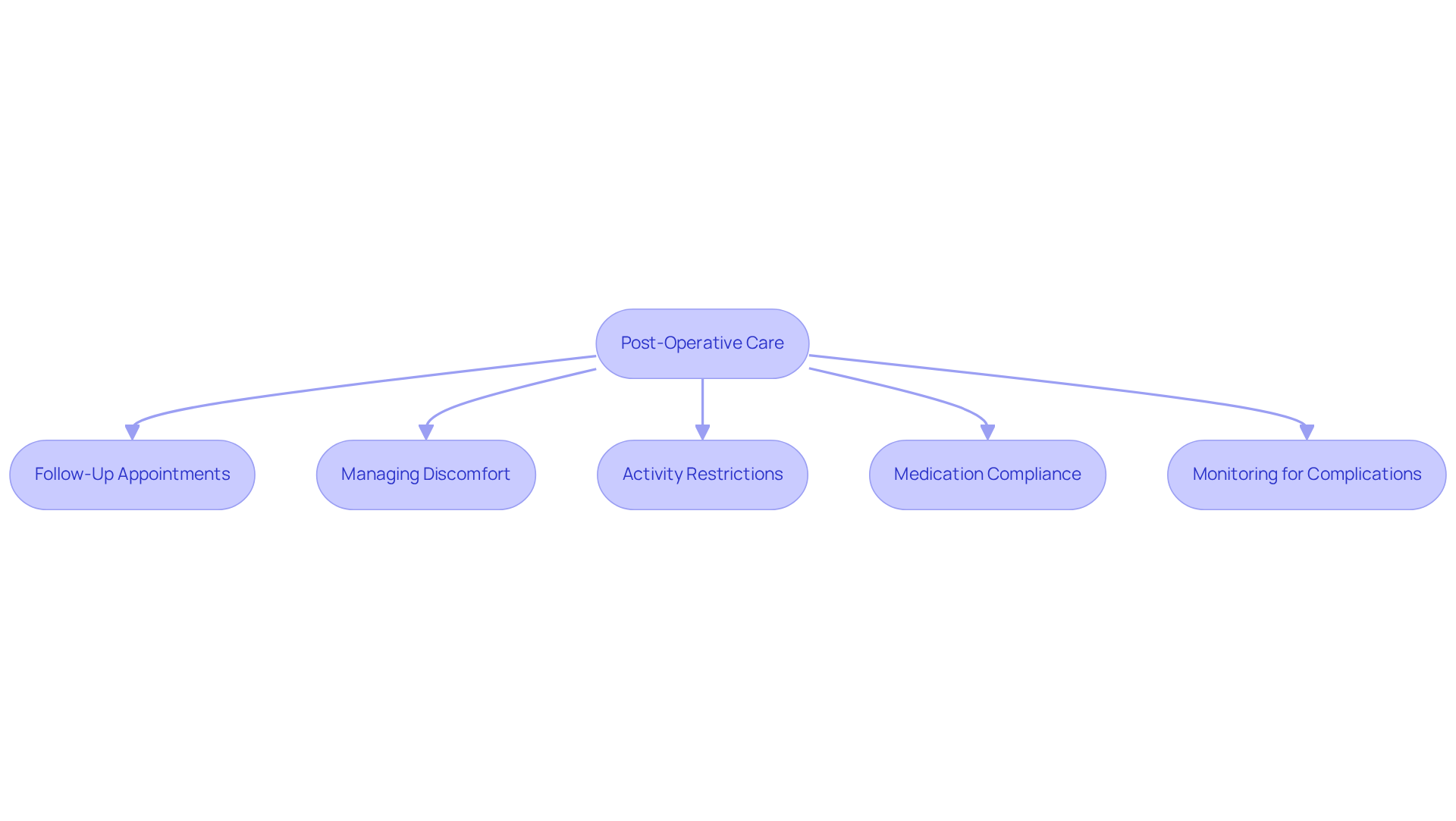
Conclusion
Eyelid ptosis, which is characterized by the drooping of one or both upper eyelids, can significantly impact both vision and aesthetics. We understand that this condition can be concerning, as it may arise from various causes, including genetic factors, aging, neurological disorders, and trauma. Addressing eyelid ptosis not only improves visual function but also enhances your overall appearance and confidence.
Throughout this article, we shared key insights regarding the causes, symptoms, diagnosis, and treatment options for eyelid ptosis. It’s important to recognize symptoms such as obstructed vision, head positioning, and eye fatigue, which can indicate the presence of this condition. Diagnostic methods, including visual acuity tests and neurological examinations, were outlined to help you understand what to expect during your evaluation. Furthermore, treatment options range from surgical interventions like levator muscle repair to non-surgical approaches such as prescription eye drops and Botox injections, offering a comprehensive view of available solutions.
Ultimately, seeking professional help is vital. We want to emphasize that addressing eyelid ptosis is not just about aesthetics; it is essential for maintaining visual health and overall well-being. If you are experiencing symptoms, reaching out to a qualified ophthalmologist can lead to effective management and treatment, paving the way for improved quality of life. Taking action is the first step toward regaining both function and confidence in your appearance.
Frequently Asked Questions
What is eyelid ptosis?
Eyelid ptosis, also known as upper lid drooping, is a condition characterized by the sagging or lowering of the upper eyelid, which can affect one or both eyes. The severity can range from a slight droop to significant sagging that may obstruct vision.
What causes eyelid ptosis?
Eyelid ptosis can be caused by various factors, including genetic factors, aging, neurological conditions, trauma, previous eye surgery, and associated eye conditions.
How does aging contribute to eyelid ptosis?
As people age, the tissues that support the upper eye area weaken, which can lead to eyelid ptosis. This is a common experience among older adults.
What are some neurological conditions that can lead to eyelid ptosis?
Disorders such as myasthenia gravis and Horner’s syndrome can affect the nerves controlling eye movement, resulting in eyelid ptosis.
Can eyelid ptosis be treated?
Yes, eyelid ptosis can be treated, often through surgical methods like Upper Eyelid Blepharoplasty, which involves removing excess skin and fat to restore the position of the eye region.
What should I expect during recovery from eyelid ptosis surgery?
Recovery typically includes some bruising and swelling, but most patients can resume normal activities within just a few days after the procedure.
Will insurance cover the surgical correction of eyelid ptosis?
If the drooping interferes with vision, it is possible that insurance may cover the surgical correction for eyelid ptosis.
Why is it important to seek medical help for eyelid ptosis?
Seeking professional medical help is crucial as untreated eyelid ptosis can lead to serious health complications and affect both vision and facial aesthetics.






